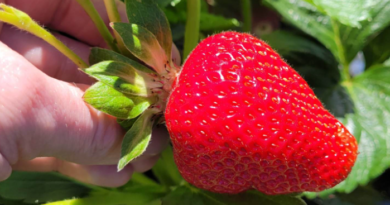Garden Tools: A Basic Introduction To Enzymes
Enzymes are essential organic molecules found in all living organisms, including plants and humans. Without enzymes, the complex reactions within us would take an eternity to happen. More than 2,000 responses can take place within a cell at once, and environmental factors such as temperature and pressure dictate the rate at which they happen. Reactions tend to slow with decreased temperature, so something more is needed if anything is going to get done.
Enzymes are highly specific proteins made up of chains of amino acids all folded together, also known as catalysis. These proteins help speed up reactions within cells. They do not take part in the reactions, but rather, move them along and are often reused over again.
Enzymes have a unique structure that folds back onto itself to form what is known as a tertiary structure, a specific shape that creates an active site ready to receive a substrate. In a process referred to as the ‘lock and key’ hypothesis, only one specific key can activate the enzyme. The substrate contains the substances involved in the reaction, which come together to form a product. Within the active site, the energy of the response lowers, therefore, allowing the reaction to take place faster in cooler temperatures. The diagram below demonstrates this schematically.

In a more complicated reaction, there are substances known as co-factors, which also activate the enzyme once the substrate has entered the active site. If the tertiary structure is rearranged or destroyed by heat-oxidizing agents such as hydrogen peroxide, the protein will no longer function. This process is known as the ‘denaturing’ of the enzyme.
Fundamentally, there are six functional classes of enzymes based on the type of reaction they are involved in. These can be found in the table below.
| Enzyme type | Function |
| Ligases | Involved in the ligation process where phosphate ester linkages form between two molecules or two DNA strands. |
| Oxidoreductase
ses |
Increases the rate of oxidation, helping the movement of electrons from one molecule to another. |
| Transferases | Helps with the moving/transferring of functional groups from one molecule to another. |
| Isomerases | Involved in the process of changing a molecule from the alpha to the beta form of isomer. It creates a structural shift in the molecule, rather than a breaking down or bonding of molecules. |
| Lyases | Involved in decarboxylation, dehydration, and the removal of ammonia to create double bonds. They also do the opposite by adding equal carbon dioxide, water, and ammonia into double bonds within the structure. |
| Hydrolases | Involved in hydrolysis where bonds are cleaved, and water is added to the molecule. |
Can You Spot The Enzyme?
It is easy to spot enzymes on an ingredient list because they almost always end with the suffix “ase” and the beginning of the word usually describes the type of reaction they spark. For example, protease helps with the break down of proteins. There are always exceptions to the rule, and some enzymes end with the suffix “in”, such as Ficin.
Plants contain hundreds of thousands of enzymes and are a source for many raw ingredients used in the manufacturing sector, including dairy products like cheese to drain-cleaning products. Enzymes are used to reduce the haze found in beer and to help break down the wood fiber in paper production. Fungi such as Trichoderma sp and Humicola, algae, and bacteria are often farmed to produce enzymes for commercial purposes.
Enzymes can be useful in the garden, particularly when recycling growing media or releasing locked up nutrients. The type of enzyme and when it is used will depend on what task you are trying to achieve. If looking to recycle media, use cellulase and pectinase-based products, which help to break down the cell walls of plant tissue. Any remaining roots left in the media can, therefore, be given back to the plant in the next cycle. Phosphates are easily locked up in the media or bind to calcium, making their bioavailability limited. For this type of problem, a phosphatase-based product would be best to help release them.
Below is a list of the most commonly found enzymes in products at your local hydroponic store and a summary of what they do.
Phenol oxidase – This enzyme is responsible for the browning of fruit by catalyzing the oxidation of o-diphenols to produce o-quinones, along with the hydroxylation of monophenols.
Phosphatase – Releases phosphate through a process of hydrolysis phosphoric acid monoesters, which are found in most plant material.
N-acetyl-Glucosaminidase – Involved in the hydrolysis of UDP-N-acetylglucosamine, which helps control the production of the plant hormone gibberellin.
Cellulase – Breaks down cellulose, the starchy material in plant matter, through a process known as hydrolysis. Glucose or other sugars are produced as a result.
Xylanase – Breaks down one of the major components in plant cell walls, the polysaccharide xylan into xylose.
Pectinase – Breaks down pectin, a polysaccharide found in plant cell walls.
Beta glucanase – This enzyme aids in the autolysis of yeast cells to release polysaccharides and mannoproteins, allowing nutrients to be released back into the media.
Ferulic acid esterase (Hemicellulase) – Releases Ferulic acid from cell walls. Ferulic acid helps with cell wall rigidity, acting as a crosslink between the lignins and polysaccharides found in lignocellulose of plant cell walls. This works best if xylanase and other enzymes are present.
Callie Seaman
I have been in the hydro industry for over 15 years, first working in the retail side providing technical advice, then moved into R&D, manufacturing and product development for brands such as Vita Link and Shogun. Currently, I am the formulation chemist at Aqua laboratories and work part-time as a post-doctorate researcher at Sheffield Hallam University. In 2017 I completed my Ph.D. thesis on the Investigation of nutrient solutions and other fertilizers for the hydroponic growth of plants and will graduate later this year. Both my Ph.D. and a first degree in Biomedical Sciences were done at Sheffield Hallam university part-time. During my Ph.D., I assisted in the setting up of Aqua laboratories and have always had a passion for science. I totally adore mushrooms and love anything todo with them.
Latest posts by Callie Seaman (see all)




